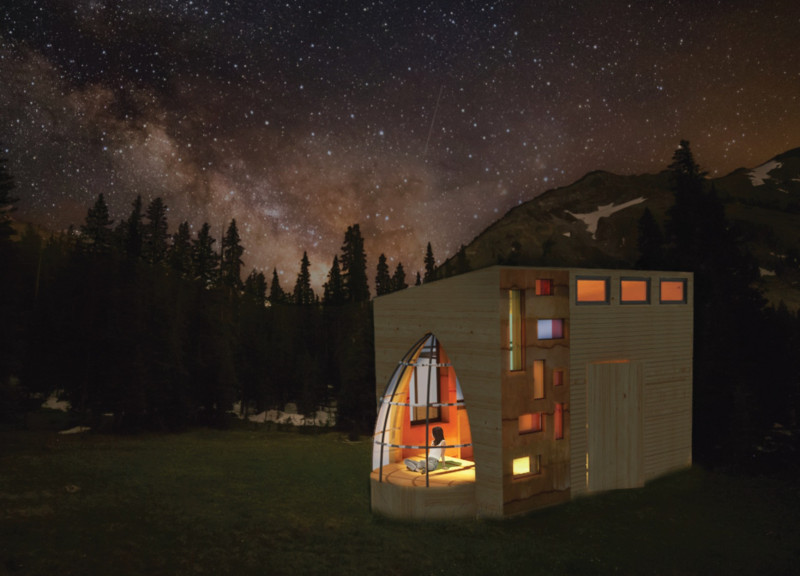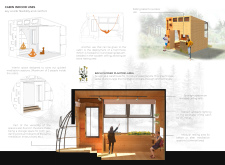5 key facts about this project
The Firefly Cabin sits in the peaceful countryside of Auckland, New Zealand, designed as a private meditation center. Its main purpose is to support meditation during the night while allowing use at any time of day. The design concept emphasizes bringing nature into the space, creating an atmosphere that encourages calmness and introspection.
Architectural Composition
A key feature of the cabin is its glass dome, which serves both as a design highlight and a visual link to the surrounding landscape. The dome offers expansive views of the sky and the environment, enhancing the experience for those inside. This connection to nature is an essential part of the meditation practice that the cabin aims to promote.
Flexibility and Functionality
Inside, the cabin is designed for flexibility and comfort, with the capacity to host up to five users for guided meditation sessions. The interior includes multifunctional storage in the stairs, allowing for easy access to meditation tools like mats and towels. This practical design improves the overall experience, facilitating movement and accessibility within the space.
Sustainable Design Strategies
Sustainability is a core aspect of the cabin, reflecting a modern approach to environmental design. Renewable energy sources power the interior lighting and underfloor heating, contributing to energy efficiency. The layout supports cross ventilation for better airflow, essential in a region known for high humidity and rain. The positioning of the cabin also allows for passive solar heating and rainwater collection, addressing both user needs and ecological concerns.
Materials and Aesthetics
Materials used in the construction reinforce the cabin’s commitment to sustainability and practicality. Tapial Walls, Timber Wood, Recycled Rimu, and Recycled Glass are all integral to the design. Each of these materials not only fulfills functional purposes but also connects the cabin to its natural surroundings, enhancing the overall aesthetic.
The Firefly Cabin's design highlights the importance of the relationship between interior and exterior spaces, inviting the calming presence of nature into the meditation experience. The thoughtful integration of elements creates a space that both supports reflection and encourages a mindful connection with the environment.






















































